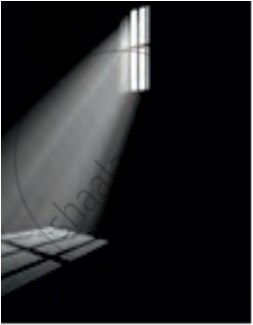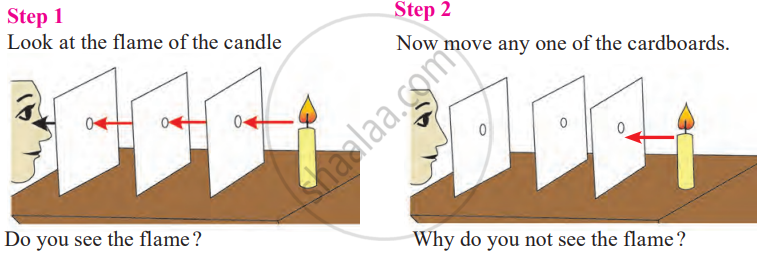Propagation of Light
Topics
Nutrition in Plants
Nutrition in Animals
- Different Ways of Taking Food
- Human Digestive System
- The Mouth and Buccal Cavity
- The Teeth and Its Structure
- The Salivary Glands
- The Food Pipe/Oesophagus
- The Stomach
- The Small Intestine
- Pancreas
- Absorption of Food
- The Large Intestine
- Assimilation of Food
- Liver
- Digestion in Grass-eating Animal
- Feeding and Digestion in Amoeba
Fibre to Fabric
- Fibre
- Fabrics
- Animal Fibres: Wool
- Animal Fibre: Silk
- Fibre to Yarn to Fabric
Heat
- Heat and Its Unit
- Heat Exchange
- The Temperature and a Thermometer
- Thermometer and Its Types
- Measuring Temperature
- Transfer of Heat
- Conduction
- Convection
- Radiation
- Kinds of Clothes Wear in Summer and Winter
Acids, Bases and Salts
- Acids
- Bases (Alkalis)
- Indicators
- Types of Double Displacement: Neutralization Reaction
- Neutralization Reactions in Our Daily Life
- Similarities and Differences Between Acids and Bases
Physical and Chemical Changes
- Classification of Change: Physical Changes
- Chemical Reaction
- Experiment of Chemical Change
- Corrosion of Metals
- Crystallisation Method
Respiration in Organisms
- Respiration
- Respiration
- Types of Respiration: Aerobic and Anaerobic Respiration
- Mechanism of respiration-Breathing
- Human Respiratory System
- Breathing in Other Animals
- Breathing Under Water
- Respiration in Plant
Transportation in Animals and Plants
- Blood
- Composition of Blood: Red Blood Cells (Erythrocytes)
- Composition of Blood: White Blood Cells (Leukocytes)
- Composition of Blood: Blood Platelets (Thrombocytes)
- Blood Vessels
- Heart Beat - Heart Sounds "LUBB" and "DUP"
- Blood Circulatory System in Human
- Human Heart
- Circulation of Blood in the Heart (Functioning of Heart)
- Excretion
- Human Excretory System
- Transport System in Plants
- Water absorbing organ
- Complex Permanent Tissues
- Complex Permanent Tissue: Phloem Structure and Function (Conducting Tissue)
- Complex Permanent Tissue: Xylem Structure and Function (Conducting Tissue)
- Transpiration
Weather, Climate and Adaptations of Animals to Climate
- Weather and Climate
- Climate
- Climate and Adaptation
- Adaptations and Its Types
- Adaptation in Animals
- Adaptation in animals of snowy regions
- Adaptations in Tropical Rainforests
Reproduction in Plants
Wind Storms and Cyclones
- Wind: The Movement of Air
- Atmospheric Pressure
- High Speed Winds Are Accompanied by Reduced Air Pressure
- Air Expands on Heating
- Wind Currents Are Generated Due to Uneven Heating on the Earth
- Thunderstorms
- Cyclones
- Thunderstorm and Cyclone: Destruction Causes, Safety Measures and Role of Advanced Technology
Soil
- Properties of Soil
- Soil Profile
- Types of Soil
- Moisture in Soil
- Water Retention in Soil
- Soil and Crops
Motion and Time
- Motion and Rest
- Speed
- Types of Speed
- Types of Motion
- Measurement of Time
- Devices for Measuring Time
- Simple Pendulum for Time
- A Time Period of Oscillation and Frequency
- Measuring Speed
- Displacement - Time Graph Or Distance - Time Graph
Electric Current and Its Effects
Light
- Light
- The propagation of light
- Reflection of Light
- Mirrors
- Plane Mirror
- Lateral Inversion
- Divergence and Convergence of Light
- Spherical Mirrors
- Formation of Image by Reflection: Real and Virtual Image
- Concave Mirror
- Convex Mirror
- Concept of Lenses
- Images Formed by Sperical Lenses
- Colour
- Prism
- Dispersion of Light Through Prism and Formation of Spectrum
Forests: Our Lifeline
- Forests: Our Lifeline
- Forest Biome
- Habitat
- Structure and Function of an Ecosystem
- Classification of Plants
- Biogeochemical Cycle
- The Oxygen Cycle
- The Carbon Cycle
- Water Cycle
- Importance of Forest
- Deforestation and Its Causes
- Consequences of Deforestation
Wastewater Story
- Water: Our Lifeline
- Sewage and Its Management
- Purification of Water
- Wastewater Treatment Plant (WWTP)
- Better Housekeeping Practices
- Controlling the Wastage of Water
- Sanitation and Disease
Water: A Precious Resource
- Water: Our Lifeline
- Availability of Water
- Water Cycle
- Sources of Water
- Scarcity of Water
- Distribution of Water in India
- Water Management (Conservation of Water)
- Fresh Water Management
- Controlling the Wastage of Water
- Scarcity of Water
- Introduction
- Experiment 1
- Experiment 2
Introduction:
The propagation of light refers to how light travels through space or any medium. Light always moves in a straight line unless it is reflected or refracted by an object.
Observation in Daily Life:
- You might notice rays of light entering a dark room through a small slit in a door or a hole in the roof, especially in the afternoon when sunlight is strong.
- As the rays of light move towards the floor, they pass through the air, and you can sometimes see dust particles floating in the air.
- Normally, light is invisible as it travels, but when dust particles or small objects are in the way, they reflect the light.
- These dust particles make the path of light visible to our eyes, and we can clearly see that light moves in a straight line.
- This behaviour of light moving in a straight line is called rectilinear propagation of light.

Light entering through a window
Experiment 1
1. Aim: The experiment aims to demonstrate how light travels in straight lines.
2. Requirements: three cardboards, a thick needle (to make holes), a candle, and matches or a lighter.
3. Procedure
- Take three pieces of cardboard and make a small hole using a thick needle in the centre of each.
- Arrange the cardboard so that the holes align perfectly in a straight line.
- Place a candle on one side of the aligned cardboard and light it.
- Look through the holes from the opposite side to see the candle's flame.
4. Observation
In Step 1, when the holes in the cardboard are perfectly aligned, you can see the flame because light travels in straight lines and passes through the aligned holes directly to your eye.
In Step 2, moving any of the cardboard out of alignment blocks the path of light, making the flame invisible.
5. Conclusion: This experiment demonstrates that light travels in straight lines, as the flame is only visible when the holes are aligned and becomes invisible when the alignment is disrupted, confirming the linear propagation of light.

Experiment 2
1. Aim: This experiment aims to investigate how the bending of a tube affects the path of light and the visibility of an object observed through the tube.
2. Requirements: a bendable tube, a candle, and a stand to hold the candle.
3. Procedure
Step 1: Position the candle on a stand and observe it through the straight tube to confirm initial visibility.
Step 2: Gradually bend the tube and attempt to view the candle through the tube once more.
4. Conclusion: The candle is visible when the tube is straight because the light travels in a straight line through the tube to the eye. When the tube is bent, the candle becomes invisible because the bend in the tube obstructs the straight path of light, demonstrating that light does not travel through curves within the tube.
This shows that light's propagation is linear and cannot navigate around bends or curves within a medium like a tube.

Looking at the candle
Related QuestionsVIEW ALL [7]
Match the following
| 1. | Rectilinear propagation | Primary source of light |
| 2. | Plane Mirror | Non-luminous object |
| 3. | Fire fly | Periscope |
| 4. | The Moon | Pinhole camera |
| 5. | Wide light source | Spectrum of light |
| 6. | Regular reflection | luminous object |
| 7. | The sun | Penumbra |
| 8. | Band of seven colors | Glossy surface |

